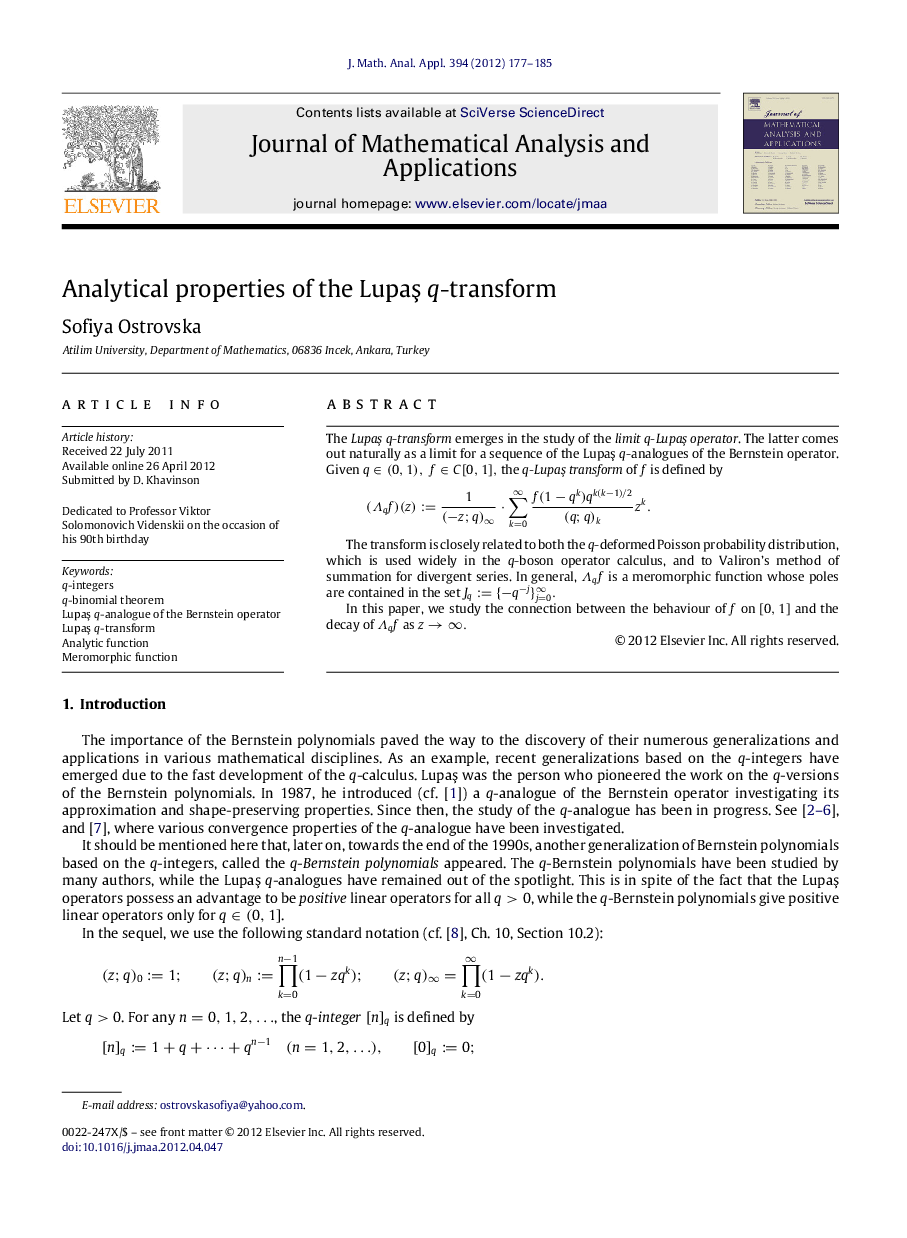| Article ID | Journal | Published Year | Pages | File Type |
|---|---|---|---|---|
| 6419102 | Journal of Mathematical Analysis and Applications | 2012 | 9 Pages |
Abstract
The LupaÅÂ q-transform emerges in the study of the limit q-LupaÅ operator. The latter comes out naturally as a limit for a sequence of the LupaÅ q-analogues of the Bernstein operator. Given qâ(0,1),fâC[0,1], the q-LupaÅ transform of f is defined by (Îqf)(z):=1(âz;q)ââ âk=0âf(1âqk)qk(kâ1)/2(q;q)kzk.The transform is closely related to both the q-deformed Poisson probability distribution, which is used widely in the q-boson operator calculus, and to Valiron's method of summation for divergent series. In general, Îqf is a meromorphic function whose poles are contained in the set Jq:={âqâj}j=0â.In this paper, we study the connection between the behaviour of f on [0,1] and the decay of Îqf as zââ.
Related Topics
Physical Sciences and Engineering
Mathematics
Analysis
Authors
Sofiya Ostrovska,
